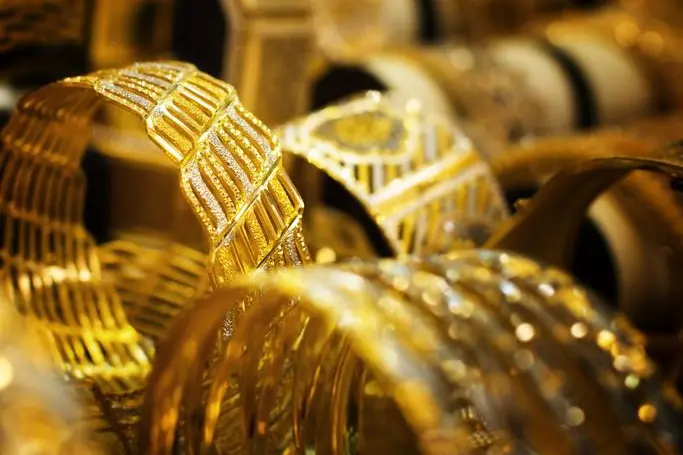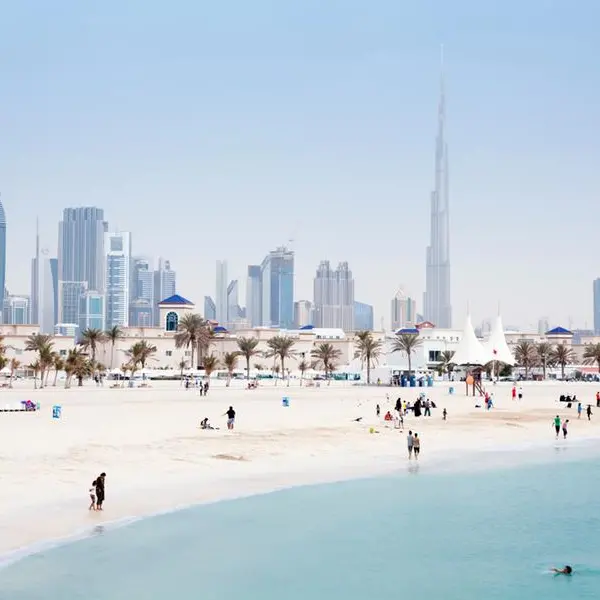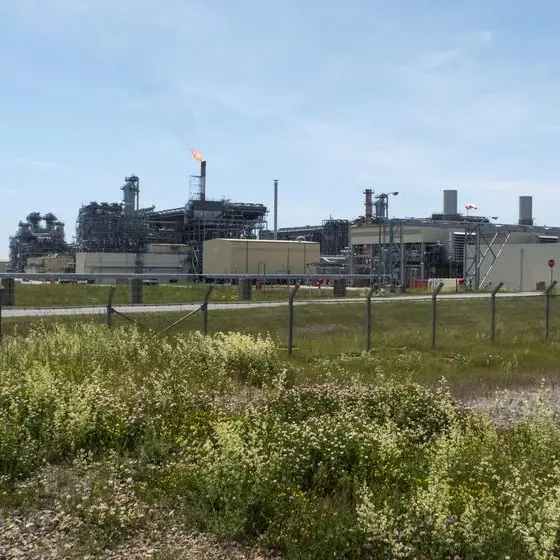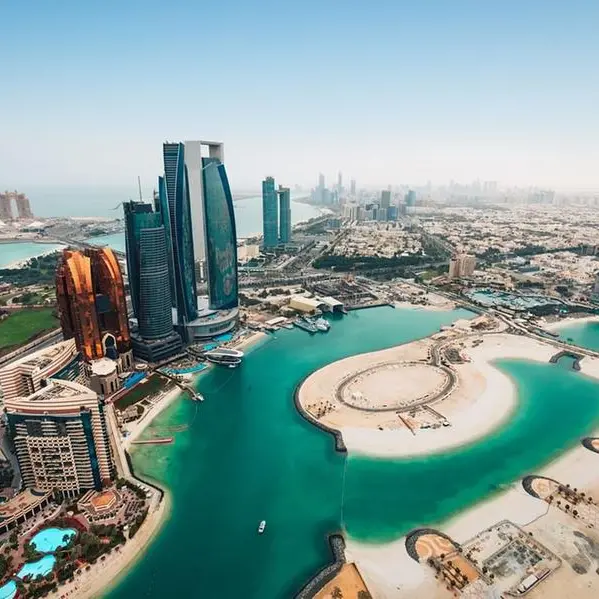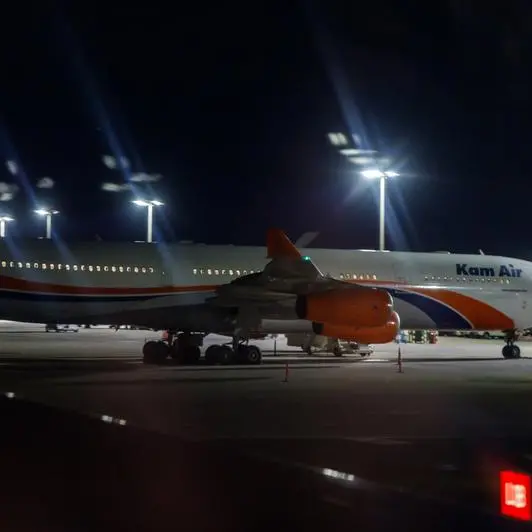PHOTO
Uncertainty gripped commodities markets this year as a nascent U.S.-China trade war, the threat of nuclear conflict with North Korea and weakening global economic growth dented confidence.
The same broad themes shaped commodities’ performance worldwide, from North America to the Gulf, with rising U.S. interest rates diminishing the allure of gold as a safe haven – at least until volatility returned to markets at the end of the year – and Brent crude surging to a four-year high in October only to then slump to a 12-month low within weeks.
In the United Arab Emirates, home to the Middle East’s biggest dedicated commodities exchange, the introduction of VAT has hurt a gold and jewellery sector already reeling from tighter credit conditions, and elevated global uncertainty shows little sign of abating.
“It has been chaos,” said Paresh Kotecha, chairman and managing director of Richcomm Global Services, a Dubai-based broker on the Dubai Gold and Commodities Exchange (DGCX) told Zawya. “It has been a tough year globally – the same challenges apply everywhere.”
The overarching theme influencing commodities markets in 2018 has been a global economic slowdown arising from the beginnings of a United States-China trade war, said Edward Bell, director of Commodities Research at Dubai’s Emirates NBD.
The International Monetary Fund in October trimmed its growth forecast for the global economy by 20 basis points for both 2018 and 2019.
“Across commodities – whether it’s industrial, agricultural or energy – demand has been uncertain, and this will likely continue into 2019,” said Bell.
In early December, a positive meeting between United States President Donald Trump and his Chinese counterpart Xi Jinping has bolstered hopes for a de-escalation in tensions between the world’s two largest economies, while fears of a nuclear strike against North Korea have eased.
For that, Trump deserves credit, but his unconventional presidential style continues to affect markets.
Market mover
“Trump is the first president that makes decisions and comments via Twitter. Before, you would hear only news authenticated by the White House. Nowadays, a Trump tweet can move the market,” said Pankaj Gupta, associate director at Dubai’s SMC Comex International. “Technical trends have no meaning in the market today – it’s all about political news.”
Richcomm’s Kotecha warned that while volatility is good for trading, irrationality is impossible to work with.
“Trump can wake up in the morning and tweet that he’s decided to pull out of some trade agreement. How does the market handle this? Business doesn’t function well in that situation,” said Kotecha.
The U.S. Federal Reserve has raised interest rates by 100 basis points this year, helping the U.S. dollar index climb 4.9 percent this year as of December 28. Commodities priced in dollars such as gold and oil are usually inversely correlated to the U.S. currency.
“Rising interest rates affect commodities in the respect of access to credit,” said DGCX chief executive Les Male.
“When interest rates change, banking and financial institutions take that as an opportunity to review and refresh some of their lending, which can trickle down to commodities markets, whichever way rates move. That slows trading as people digest the changing interest rates.”
The DGCX – whose four major asset classes are currencies, equities, precious metals and hydrocarbons - has enjoyed a record-breaking year. On November 20, the exchange surpassed its 2017 total volumes of 19.6 million contracts. It is on course to trade 22 million contracts in 2018.
DGCX’s customers include banks, corporations, hedgers, high-frequency traders and proprietary traders.
“We’re satisfied with the balance of customer distribution, but there’s more I want to do with the financial institutions,” said Male. “I see major growth potential with banks, particularly local banks, because geographically ours is very much a global business.”
The DGCX averaged daily traded value in the year to Dec. 10 was $1.85 billion, of which $1.69 billion was currencies, $70.9 million gold and $61.1 million Indian single stock futures.
The number of currency contracts traded on the DGCX has grown 20 percent year-on-year, while equities contract trading is up 90 percent this year versus 2017, helped by higher levels of volatility on global markets.
“We’re very strong with the Indian rupee, which means we attract clients who are more exposed to that currency. Particularly with local elections this month and national general elections next year, we've done well with our range of products,” said Male.
In December 2017, DGCX launched more Indian single stock futures and now offers 54 of these contracts.
Golden opportunities
“Commodities like oil and gold are directly correlated to political events, but single company stocks are less affected,” said Gupta. “When our customers decide they can’t judge which direction gold will go, they tend to switch to single stock futures, although trading is only until 2pm.
“After that, they come back to gold and currency pairs. There aren’t many long-term traders on DGCX – it’s mostly for day traders, arbitragers and hedgers. Indian rupee-dollar arbitrage is huge.”
Geopolitical uncertainties have led to swings gold prices during the year. As stockmarkets made progressive gains in the early part of the year, spot gold slumped to a 19-month low in August, dipping below $1,174 per troy ounce, but the turmoil that hit both fixed income and equities markets led to a recovery to more than $1,280 per ounce by December 28 – less than 3 percent below its annual starting price.
Despite this, Emirates NBD’s Bell said that rising interest rates made U.S treasury bills a better bet for investors.
“As the Fed steadily raised interest rates, U.S. treasury yields have jumped to above 3 percent. If you’re looking for a safe haven, you’d probably put your money there rather than gold, which relies on price increases rather than just income from the yield,” he said.
“In a market with geopolitical uncertainty but little inflation – which seems to be under control in most countries – there’s less inclination to make gold your safe haven.”
Gold demand in the Gulf has never fully recovered from the sharp downturn in oil prices from 2014, Bell noted, while gold prices, whether in Dubai or London, will broadly follow the same trends.
“There might be specific short-term catalysts for a differential, but by and large they’ll be moving within the same pattern as international markets,” he said.
In March, the DGCX soft-launched the world’s first sharia-compliant gold futures contract. As of December 10, 16,672 troy ounces of Sharia-compliant gold futures had been traded.
“We’re not we're going to be able to compete on a like-for-like basis with a cut-and-paste kind of product against the big exchanges, so we've got to be much more innovative,” said Male.
The introduction of VAT in the United Arab Emirates in January roiled Dubai’s sprawling gold sector, with companies unsure on which products the new tax was applicable. VAT only applies to retail, not wholesale, so trading on the DGCX, for example, is unaffected, but it does apply to finished goods such as jewellery.
“The gold business in the region dried up overnight because no one knew exactly what they could and couldn’t do,” said Kotecha. “It was easier for the trade to explore new destination markets like Turkey or India where the rules are already established.”
Tightening credit restrictions have forced many small and medium-sized businesses, including jewellers, out of business, said Gupta, while the Indian rupee has fallen around 11 percent against the dollar, deterring Indians from travelling to Dubai to buy gold.
“Our trading volumes have fallen by about 30 percent because the investors aren’t here. The SME sector was our biggest clients. Now, SMEs don’t have money, so cannot invest,” he said.
Swishing around
DGCX also offers futures contracts for WTI crude and Brent crude. Margin offsetting, which means traders can reduce their margin obligations through other option positions in their portfolio, has boosted activity.
Brent crude hit both a four-year high and 12-month low in 2018, trading in a $35.36 range between its highest and lowest prices. A production cut announced by OPEC and its allies on December 7 was unexpectedly large - Trump comments demanding lower crude prices ahead of the decision had convinced traders any output reduction would be relatively small. Yet oil prices made little sustained gains after OPEC revealed its intentions; previously, a similar decision would have sparked a substantial move.
“We’ve a world that’s racing towards the lowest cost denominator in terms of oil – OPEC’s cuts are being counteracted by record increases in U.S. shale production,” added Kotecha.
“Therefore, there is an imbalance of supply and demand, and uncertainty as to what will happen next.”
(Reporting by Matt Smith; Editing by Michael Fahy)
(michael.fahy@refinitiv.com)
Our Standards: The Thomson Reuters Trust Principles
Disclaimer: This article is provided for informational purposes only. The content does not provide tax, legal or investment advice or opinion regarding the suitability, value or profitability of any particular security, portfolio or investment strategy. Read our full disclaimer policy here.
© ZAWYA 2018